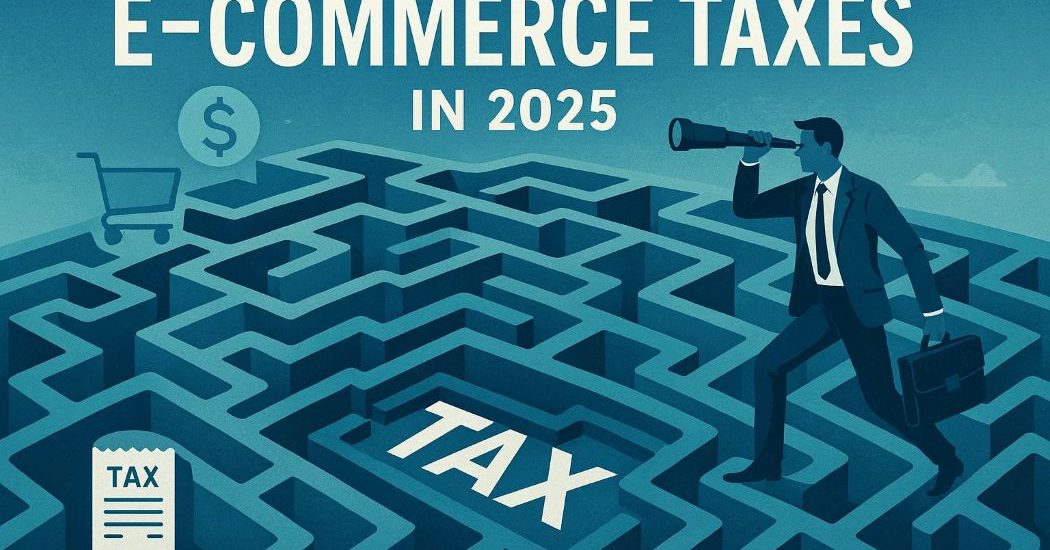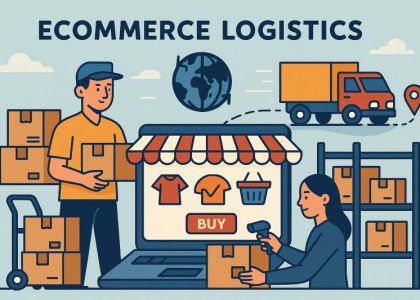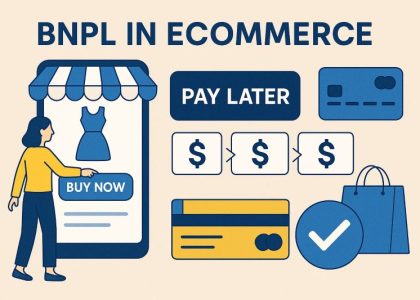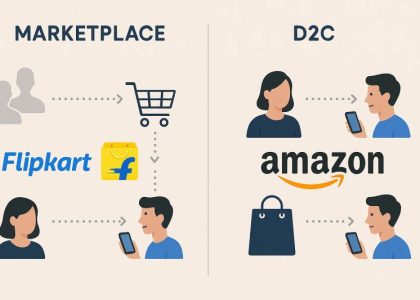Navigating the world of e-commerce in 2025 brings endless opportunities for entrepreneurs and businesses—but with that growth comes increased responsibility, especially in the area of taxes.
Whether you’re launching your first online store or scaling your ecommerce business, tax compliance is no longer optional. With evolving regulations, cross-border laws, and digital product complexities, understanding ecommerce taxes can feel like navigating a legal labyrinth.
In this guide, we break down the essentials you need to know to stay compliant, avoid costly mistakes, and grow your business confidently.
1. What Do E-commerce Taxes Cover?
Ecommerce taxes are not limited to income tax. Depending on your business model and locations, you may face:
- Sales Tax / GST / VAT
- Import and Export Duties
- Digital Goods Taxes
- Marketplace Facilitator Laws
- Local, State, and International Tax Regulations
Your tax obligations depend on what you sell, where you are based, and where your customers live. Understanding these responsibilities is the first step toward staying compliant.
2. Understand Where You Have a Tax Nexus
A tax nexus is a connection between your business and a taxing jurisdiction. If you have a nexus in a particular state or country, you’re legally required to register there and collect applicable taxes.
You may establish a nexus if you:
- Regularly ship products to a region
- Store inventory in fulfillment centers (like Amazon FBA)
- Use affiliates or advertise heavily in certain locations
- Exceed a region’s sales threshold (e.g., $100,000 annually in the U.S.)
In 2025, tax authorities are stricter than ever—so don’t overlook where your business operates digitally or physically.
3. Sales Tax vs. VAT/GST: What’s the Difference?
- Sales Tax (used in the U.S.) is added at the point of sale and paid by the buyer.
- VAT/GST (common in the EU, Australia, and India) is charged at each stage of the supply chain.
If you sell internationally, you’ll likely need to handle different tax types across countries. Choose an ecommerce platform—like Shopify, WooCommerce, or BigCommerce—that can manage variable tax rates with ease.
4. Stay Compliant with Digital Goods Tax Laws
Think selling digital products exempts you from taxes? Think again.
Many governments now tax:
- eBooks and digital guides
- Online courses and webinars
- Software, apps, and SaaS tools
- Streaming content and digital art
- NFTs and other blockchain-based assets
Apply location-based tax rules at checkout to ensure accurate rates and avoid fines.
5. Understand Marketplace Facilitator Laws
If you sell on platforms like Amazon, Flipkart, Etsy, or eBay, they may handle tax collection and remittance for you. But that doesn’t mean you’re off the hook.
You still need to:
- Track income accurately
- File tax returns in relevant jurisdictions
- Stay registered if required by law
Tip: Always review your marketplace’s tax handling policies to avoid surprise liabilities.
6. Use Automation Tools to Simplify Tax Filing
Manual tax management is time-consuming and prone to errors. Instead, automate your ecommerce tax compliance with tools like:
- TaxJar
- Avalara
- Quaderno
- Zoho Books (with integrated tax modules)
These platforms calculate taxes by region, file returns, and notify you of changes in compliance requirements.
7. Track Everything for Easy Filing
Tax season becomes much easier when you keep clean records year-round. Make sure to track:
- Total revenue by country or state
- Taxes collected per transaction
- Shipping fees
- Discounts and refunds
- Platform commissions and marketplace income
Use accounting software like QuickBooks or Xero to stay organized.
8. Work with a Tax Professional
Even with the best tools, nothing beats expert advice. A qualified ecommerce tax consultant can:
- Review your compliance setup
- File taxes accurately
- Help reduce your liability
- Identify eligible deductions
If you sell internationally or at scale, professional guidance becomes even more crucial.
9. Watch Out for Tax Scams and Fake Notices
Tax-related scams are on the rise in 2025. Ecommerce sellers often receive fake emails or messages pretending to be from tax agencies.
To stay safe:
- Verify all communication sources
- Use official government tax portals
- Avoid shady or unlicensed consultants
Failing to comply—intentionally or by mistake—can lead to hefty penalties or suspension from major platforms.
10. Prepare for Ongoing Tax Law Changes
Ecommerce tax laws evolve quickly. Governments are actively monitoring:
- Cryptocurrency transactions
- Cross-border ecommerce
- Digital wallet and fintech platforms
Stay informed by:
- Subscribing to tax or ecommerce newsletters
- Monitoring official government announcements
- Reviewing your compliance setup every 3–6 months
Staying proactive helps you avoid unexpected issues down the road.
Conclusion: Don’t Get Lost in E-commerce Taxland
Navigating the tax side of e-commerce is more important than ever in 2025. While it might not be the most exciting task, ignoring tax responsibilities can lead to serious financial setbacks. Successfully navigating this landscape requires staying informed, using reliable tools, and seeking expert advice—steps that help protect your business whether you’re a new seller or an established global brand.
Your ecommerce success depends on what you sell—and how well you handle what you owe.





